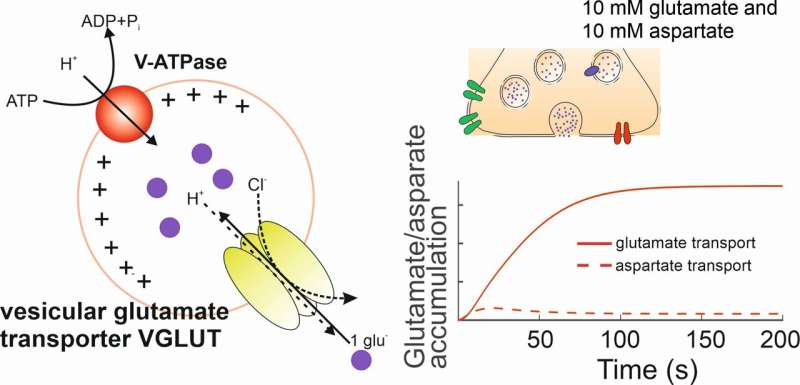
In the brain, neurons communicate via neurotransmitters, which trigger electrical signals in downstream neurons by binding and activating specific receptors. Neurotransmitters are released through the fusion of synaptic vesicles, generic sustiva online for sale us pharmacy which contain large amounts of neurotransmitters.
Scientists from the Institute of Molecular and Cellular Physiology of Forschungszentrum Jülich and the University of South Florida studied how synaptic vesicles accumulate the neurotransmitter glutamate and developed a mathematical model of the synaptic vesicle that describes these processes. The results have now been published in the journal Nature Communications.
The unique computing performance of our brain is based on fast and high frequency communication between neurons. High frequency synaptic transmission requires constant regeneration of synaptic vesicles. For this, immature synaptic vesicles invaginate from the plasma membrane and are filled by specialized neurotransmitter transporters.
Vesicles initially contain the same salt solution as the extracellular space, with high concentrations of chloride (Cl–) and sodium (Na+). For glutamatergic synaptic vesicles, chloride ions must be removed in order to effectively enrich the vesicle with glutamate, which is also negatively charged. Both of these tasks are performed by the same protein, the vesicular glutamate transporter. The Jülich scientists used electrophysiological methods to study how this happens in detail.
Scientific results
They could show that vesicular glutamate transporters not only transport glutamate, but actually all tested anions. However, transport of glutamate differs from other anions in its mechanism: each glutamate molecule is exchanged for a proton. This transport is slow, but allows glutamate to be transported against its concentration gradient and thus to generate high concentrations in the synaptic vesicle.
Aspartate and other large anions are transported slowly but without coupling to the proton gradient. Chloride ions diffuse through an ion pore at a rate 300 times faster than glutamate. All processes are regulated by the pH value on the luminal membrane side and the membrane voltage. They are inactive at neutral pH value and require a voltage to become active.
After formation, synaptic vesicles assume neutral pH value. Acidification by proton pumps activates the transporter, permitting fast exit of Cl– ions and effective depolarization of the vesicle. This creates optimum conditions for proton-glutamate exchange. For this reason, only glutamate, but not the very similar aspartate, is accumulated within the vesicle. Prof. Ghanim Ullah from the University of South Florida has generated a mathematical model that correctly describes all experimental findings on glutamate accumulation in the synaptic vesicle.
The results provide important new insights into the molecular basis of brain function. They may also help to develop new therapeutic concepts for diseases such as stroke or certain neurodegenerative diseases, in which increased extracellular glutamate concentrations cause neuronal death.
More information:
Bettina Kolen et al, Vesicular glutamate transporters are H+-anion exchangers that operate at variable stoichiometry, Nature Communications (2023). DOI: 10.1038/s41467-023-38340-9
Journal information:
Nature Communications
Source: Read Full Article
